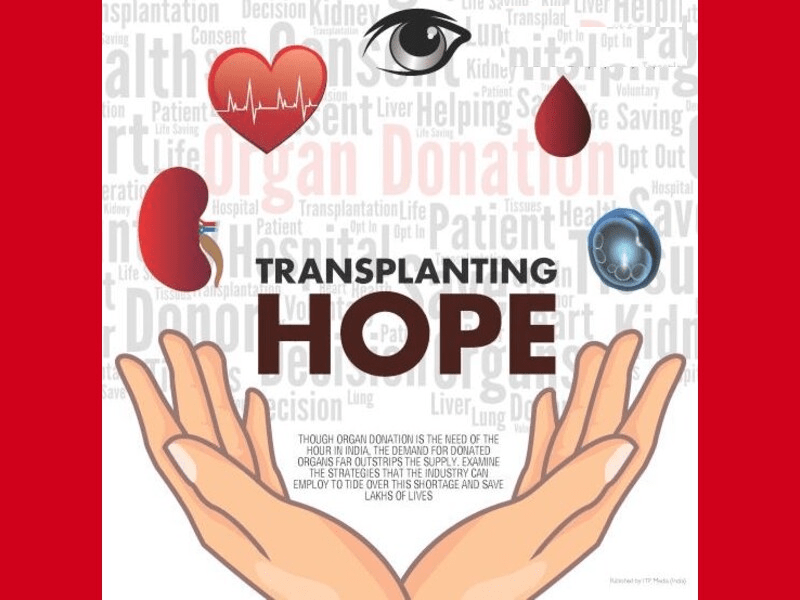The landscape of organ transplantation is undergoing a revolutionary shift, offering renewed hope to countless individuals awaiting life-saving procedures. A groundbreaking medical innovation, a new procedure, is now enabling doctors to successfully transplant organs from donors previously deemed incompatible due to blood type or antibody mismatches. This breakthrough significantly expands the donor pool, potentially saving thousands of lives each year and diminishing the agonizing wait times that characterize the current system. This new avenue in transplantation marks a pivotal moment in medical history, changing the way we approach organ donations and providing a brighter future for those in need of a transplant.
Overcoming the Barriers of Incompatibility
Traditionally, organ transplants require a close match between the donor and recipient’s blood type and human leukocyte antigens (HLAs). These antigens are proteins found on the surface of cells that the immune system uses to distinguish between self and non-self. When a recipient’s immune system recognizes the donor organ as foreign, it can trigger a rejection response, leading to organ failure. However, the new procedure is designed to mitigate these rejection risks.
How Does the New Procedure Work?
- Desensitization: The recipient undergoes a process to lower the levels of antibodies that would attack the donor organ. This often involves plasmapheresis (removing antibodies from the blood) and intravenous immunoglobulin (IVIG) therapy.
- Immunosuppression: Powerful immunosuppressant drugs are used to suppress the recipient’s immune system, preventing it from attacking the transplanted organ.
- Careful Monitoring: Close monitoring of the recipient’s immune response is crucial to detect and treat any signs of rejection early on.
Benefits and Risks
While the new procedure offers significant benefits, it’s important to acknowledge the associated risks. Like any major medical intervention, there can be complications. The risks associated with increased immunosuppression are a key consideration.
Benefits:
- Expanded donor pool, leading to more transplants.
- Reduced wait times for patients in need.
- Improved survival rates for patients who would otherwise be ineligible for a transplant.
Risks:
- Increased risk of infection due to immunosuppression.
- Potential for rejection, despite the desensitization process.
- Side effects from immunosuppressant medications.
The Future of Transplantation
This advancement represents a significant step forward in the field of organ transplantation. As research continues and the new procedure is refined, it promises to transform the lives of countless individuals. The new procedure holds immense potential to alleviate the organ shortage crisis and offer hope to patients who have long waited for a chance at a healthier future.
Ethical Considerations
Beyond the medical advancements, it’s crucial to address the ethical considerations surrounding this new procedure. As you delve deeper into this field, you’ll encounter complex questions about resource allocation, informed consent, and the potential for disparities in access to this advanced treatment. For instance, the intensive nature of desensitization and immunosuppression protocols means that not all transplant centers will be equipped to offer it, potentially creating geographical inequalities. Similarly, the cost of these treatments can be substantial, raising concerns about equitable access for patients from diverse socioeconomic backgrounds.
Navigating Ethical Dilemmas
As a future leader in this field, you must be prepared to engage in thoughtful discussions about these ethical challenges. Consider the following:
- Transparency and Informed Consent: Ensure patients fully understand the benefits and risks of the procedure, including the long-term implications of immunosuppression.
- Fair Resource Allocation: Advocate for policies that promote equitable access to this life-saving treatment, regardless of socioeconomic status or geographical location.
- Continuous Evaluation: Regularly assess the outcomes of the procedure and identify any disparities in access or outcomes.
Practical Implications for Clinicians
Now, let’s consider the practical implications for clinicians involved in organ transplantation. Implementing this new procedure requires a multidisciplinary approach, involving transplant surgeons, nephrologists, immunologists, and specialized nurses. A well-coordinated team is essential for successful patient selection, pre-transplant preparation, intraoperative management, and post-transplant care.
Building a Competent Transplant Team
Here are some key considerations for building and maintaining a competent transplant team:
- Specialized Training: Ensure that all team members receive specialized training in the new procedure, including desensitization protocols, immunosuppression management, and rejection monitoring.
- Clear Communication: Establish clear lines of communication and protocols for information sharing among team members.
- Collaborative Decision-Making: Foster a culture of collaboration and shared decision-making, involving all team members in the patient’s care plan.
Future Research Directions
While the new procedure represents a significant advancement, there is still much to learn. Future research should focus on optimizing desensitization protocols, developing more targeted immunosuppressant drugs, and identifying biomarkers for early detection of rejection. For instance, exploring novel approaches to induce tolerance, where the recipient’s immune system accepts the donor organ without the need for chronic immunosuppression, could be a game-changer.
Areas for Further Investigation
As you embark on your research journey, consider exploring the following areas:
- Tolerance Induction: Investigate strategies to induce tolerance and reduce the need for long-term immunosuppression.
- Biomarker Discovery: Identify biomarkers for early detection of rejection, allowing for timely intervention and improved outcomes.
- Personalized Immunosuppression: Develop personalized immunosuppression regimens based on individual patient characteristics and immune responses.

